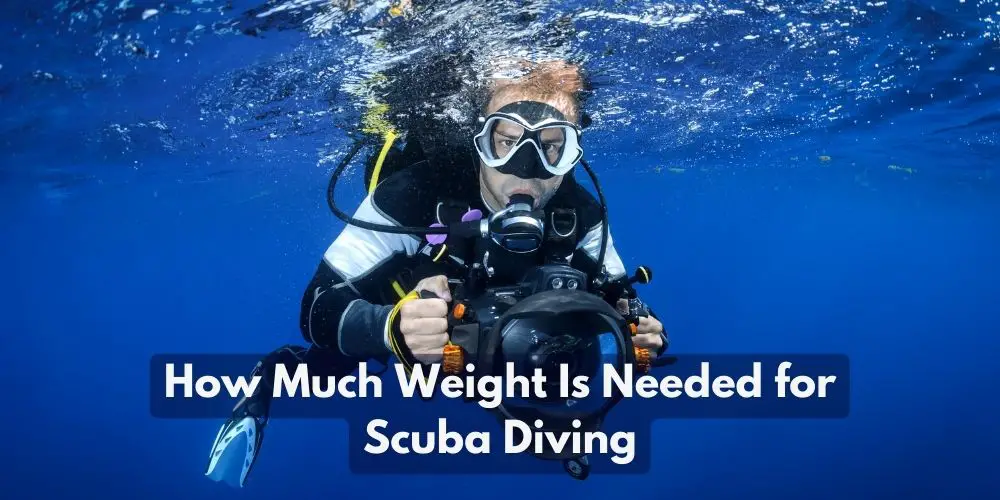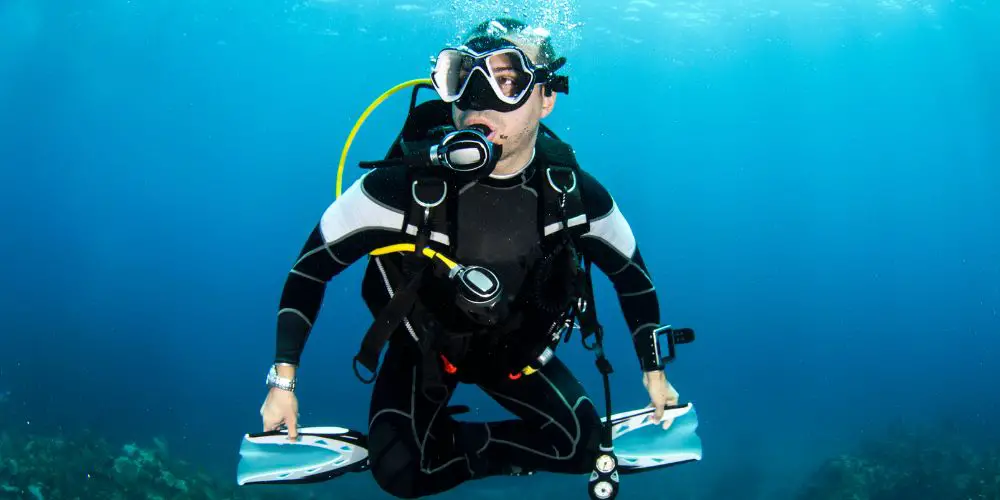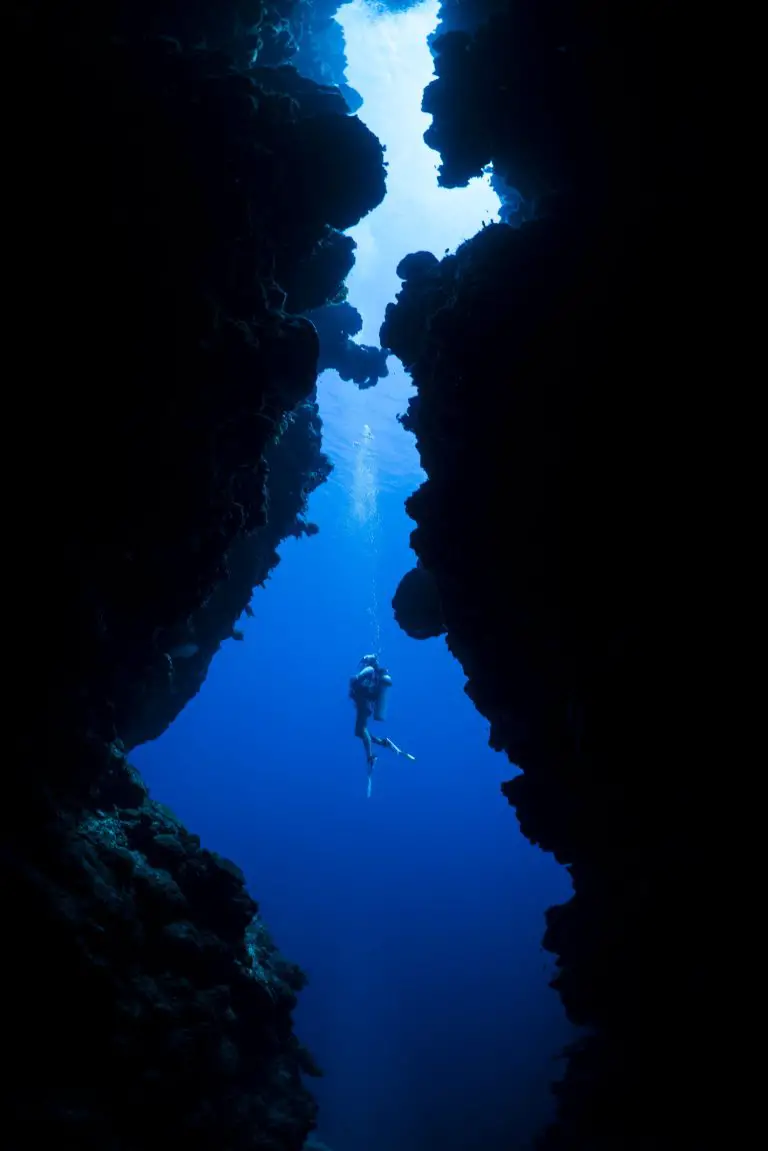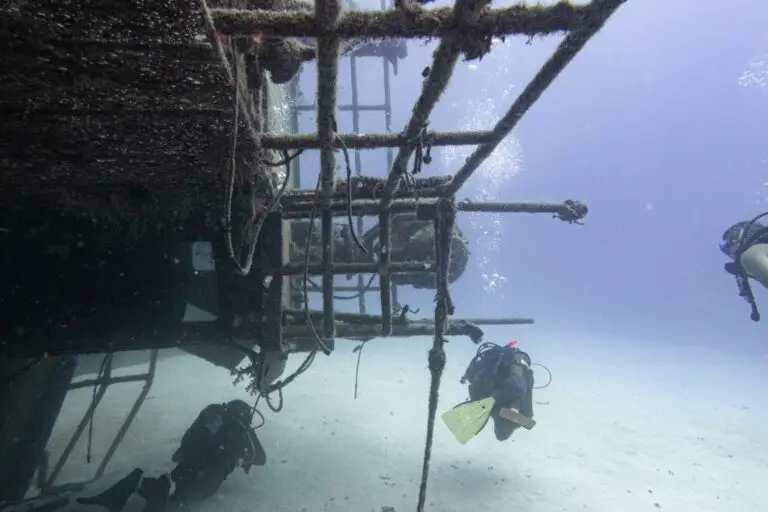
Proper weighting is essential for scuba divers to achieve optimal buoyancy control and ensure their safety underwater. Incorrect weighting can disrupt buoyancy, leading to struggles in staying submerged or uncontrolled descents. In this blog post, we aim to provide a clear understanding of how much weight is needed for scuba diving. By exploring the impact of weighting on buoyancy control and safety, we will equip divers with the knowledge to enhance their diving experiences and master the art of buoyancy.
Unveiling the Basics of Buoyancy in Scuba Diving
Buoyancy is a crucial concept in scuba diving, allowing divers to achieve balance and control underwater. It refers to the upward force exerted on an object in a fluid, like water. Understanding buoyancy is essential for divers to navigate effortlessly and safely underwater.
In scuba diving, buoyancy serves two main purposes. First, it enables divers to control their depth by ascending, descending, or hovering at a particular level. Second, it conserves energy by allowing divers to achieve neutral buoyancy, where they neither sink nor float but remains suspended in the water.
Several factors influence buoyancy in scuba diving:
- Body composition and weight: Divers’ body composition and weight impact their buoyancy.
- Exposure suit thickness and characteristics: The thickness and buoyancy properties of the exposure suit, such as wetsuits or dry suits, affect buoyancy.
- Dive equipment and configuration: The choice and setup of dive equipment, including the BCD, cylinders, and accessories, influence buoyancy.
Understanding these factors helps divers achieve the desired balance underwater. In the next section, we will explore various weighting systems and their pros and cons, enabling divers to make informed decisions for optimal buoyancy control.
How Much Weight Is Needed for Scuba Diving?

To determine your initial weight for scuba diving, use the guideline of 1/10 of your body weight when using a 5 mm suit in saltwater. For adjustments, subtract 4-6 pounds if diving in tropical waters with a thin wetsuit, or add 4-6 pounds for cold water dives with thicker exposure protection. Conducting a buoyancy check before each dive helps ensure proper weight distribution for optimal control and comfort underwater.
Weighting Systems and Calculating Weight Requirements
- Integrated Weight Systems: Integrated weight systems are built into the buoyancy control device (BCD). They allow divers to carry their weights in pockets or compartments within the BCD. Integrated weight systems offer streamlined profiles and easy weight distribution, eliminating the need for a separate weight belt.
- Weight Belts: Weight belts are a traditional and widely used weighting system in scuba diving. They consist of a belt with removable weight pouches that can be added or removed as needed. Weight belts provide flexibility in adjusting weight distribution and can be easily shared among divers.
- Trim Weights: Trim weights are small, additional weights designed to fine-tune a diver’s buoyancy and achieve better trim or balance in the water. They are typically attached to the BCD or weight belt and can be strategically positioned to optimize body position and streamline movements.
Pros and Cons of Each System
-
Integrated Weight Systems:
- Pros: Streamlined profile, easy weight distribution, enhanced mobility, and comfort.
- Cons: Limited weight capacity, less flexibility in adjusting weight distribution.
-
Weight Belts:
- Pros: Flexibility in weight adjustment, easy to share among divers.
- Cons: Additional equipment to manage, the potential for slippage or readjustment during dives.
-
Trim Weights:
- Pros: Fine-tune buoyancy and trim, optimize body position and movements.
- Cons: Additional equipment to manage, requires careful positioning and adjustment.
Considerations when Selecting a Weighting System
- Personal Preference and Comfort: Choose a weighting system that feels comfortable and suits your diving style. Consider factors such as ease of use, mobility, and personal preference.
- Dive Environment and Conditions: Consider the dive environment, water temperature, and exposure suit thickness. Cold-water dives may require additional weight due to thicker exposure suits.
- Experience and Skill Level: Novice divers may benefit from simpler and more straightforward weighing systems, while experienced divers may opt for systems that offer greater customization and fine-tuning options.
Calculating Weight Requirements
Determining the appropriate amount of weight for a dive is essential for achieving neutral buoyancy. Factors to consider when calculating weight requirements include:
- Water Salinity and Temperature: Saltwater is more buoyant than fresh water, so divers may require less weight in saltwater environments. Water temperature affects buoyancy, as colder water may require additional weight due to thicker exposure suits.
- Dive Depth and Conditions: Deeper dives often require more weight due to increased compression and reduced buoyancy. Strong currents or rough conditions may also necessitate additional weight for better stability.
- Cylinder Size and Material: Different cylinder sizes and materials have varying buoyancy characteristics. Aluminum cylinders are positively buoyant when empty, while steel cylinders tend to be negatively buoyant.
Dive Planning and Weight Estimation Techniques
To estimate weight requirements accurately, divers can employ the following techniques:
- Buoyancy Check and Surface Buoyancy Test: Conducting a buoyancy check in shallow water helps divers determine their baseline buoyancy and make initial weight adjustments. A surface buoyancy test involves floating at the surface with an empty BCD, ensuring neutral buoyancy with proper breathing.
- Using Weight Charts and Manufacturer Guidelines: Many equipment manufacturers provide weight charts and guidelines to estimate weight requirements based on factors such as body weight, exposure suit thickness, and cylinder size.
- Consultation with Experienced Divers or Instructors: Seeking advice from experienced divers or instructors can provide valuable insights and recommendations on weight requirements based on specific dive locations, conditions, and personal factors.
By considering these factors and employing weight estimation techniques, divers can ensure they have the correct amount of weight for achieving neutral buoyancy and a balanced underwater experience.
Safety Considerations and Recommendations
Safety should always be a top priority in scuba diving, and proper buoyancy control plays a crucial role in ensuring a safe and enjoyable dive. In this section, we will highlight the importance of safety in scuba diving and provide key recommendations for maintaining safe weight management and buoyancy control.
Importance of Safety and Buoyancy Control in Scuba Diving:
Maintaining proper buoyancy control is essential for several reasons. It enables divers to conserve energy, minimize the risk of accidental damage to marine ecosystems, and navigate the underwater environment with ease. Additionally, achieving neutral buoyancy helps prevent uncontrolled descents, barotrauma, and other potential injuries associated with improper weight management.
Guidelines for Safe Weight Management
- Regular Buoyancy Checks and Adjustments: Before every dive, conduct a buoyancy check in shallow water to ensure neutral buoyancy with proper breathing. Periodically reassess and adjust your weight distribution as needed during the dive to maintain optimal buoyancy control.
- Proper Training and Certification: Obtain proper training and certification from reputable scuba diving organizations. Training courses cover essential skills, including buoyancy control, and provide guidance on weight management techniques. Continuously practice and reinforce these skills to enhance your buoyancy control abilities.
- Continual Learning and Experience-Building: Scuba diving is an ongoing learning experience. Stay updated with the latest diving practices, equipment advancements, and buoyancy control techniques. Seek opportunities for further, such as advanced training courses or workshops, to refine your skills and expand your knowledge base.
By following these guidelines, divers can ensure their safety and enhance their overall diving experiences. Buoyancy control is a skill that improves with practice, so dedicate time to hone your abilities and become a more proficient and confident diver.







